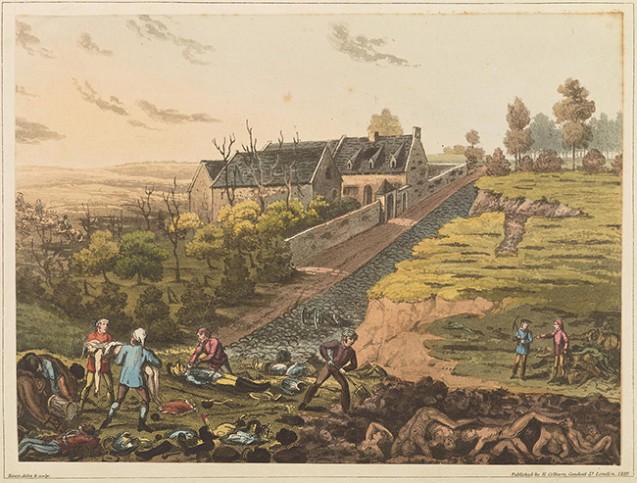It is almost impossible to establish a precise total for the loss of human life during the Napoleonic wars, and this is probably the reason why the most unlikely body counts have been, and still are, proposed. Arriving at a precise figure is hampered first and foremost by the absence of easily usable primary sources. It is true that with difficulty – and with a significantly large margin of error – you can get towards a total for losses in battle, but we know little about the wounded who died of illness or accidents in the days, weeks or months afterwards. As for civilian losses, the subject has barely been studied: during the period, people cared little for such statistics, and the numbers were rarely noted.
For want of something better, the totals estimated (no-one knows how) in the 19th century have been accepted as gospel, and yet they can for the most part be challenged. The French historian, Hippolyte Taine proposed, for example, a figure of 3.1 million French deaths in the wars of the Revolution and Empire, 1.7 million of which during the Napoleonic period alone. But if you compare these numbers with the number of men actually mobilised (1.35 million during the Revolution, 1.47 million during the Empire, plus 0.8 million recalled), the conclusion would be that almost all French soldiers were killed. Now, we know from the preliminary census performed to establish the number of surviving veteran recipients of the St Helena medal, that nearly 450,000 old soldiers were still alive in the 1850s, more than forty years after Waterloo.
Today, it is generally estimated that 600,000 to 1.3 million French perished during the military campaigns between 1792 and 1815, 70 to 75% of which for the wars of the Empire (1805-1815), in other words, between 400,000 and one million. The actual totals are probably somewhere right in the middle of the spread, the breadth of which being eloquent proof of the difficulties faced by historians attempting to establish the real numbers. These totals, for example, include those who simply “disappeared”, those who never came back to the regiment, numbering in the tens of thousands. Now, not all those who disappeared died: proof of this is a recent study which shows that tens of thousands – 30, 40, 50,000? – of French deserters settled in Russia during the Campaign of 1812. In the same way, the numbers of those killed in battle have been revised downwards. The example of Austerlitz is striking: before the present day, estimates reckoned on 3,000 to 5,000 French mortalities. A precise count of individual men made by two very patient historians has reduced this number to circa 1,600 deaths, a lot, admittedly, for a single day’s battle, but a great deal less than the “traditional” figure.
A similar lack of certainty surrounds French allied and French enemy losses. They are thought to be slightly higher than those of the Grande Armée. If that figure is accepted, then the Imperial wars cost Europe between 1 and 2.5 million men in ten years (there were more than 10 million deaths during the Thirty Years’ War and in 14-18, and three to four times as many in 39-45).
Whilst this is not a consoling statistic, demographers have shown how the continent overcame the setback caused by the Revolutionary and Imperial wars, given medical progress (notably in terms of perinatal advances) and given the modification of legal conditions related to marriage, divorce and inheritance. France in 1801 had 900,000 more inhabitants than it had had ten years earlier and in 1815 more than 1.5 million more than in 1790. Europewide, populations increased: growth was even slightly higher for the period 1790-1816 than it had been for that from 1740 to the Revolution.
[Illustration: plate XIII – L from The Battle of Waterloo: An Historical Account of the Campaign in the Netherlands by William Mudford, (London: Henry Colburn, 1817) artist: C. C. Hamilton, engravers George Cruikshank, James Rouse. “A front view of the farm of La Haye Sainte. It was here that the second desperate attack was made by the French, in which the celebrated charge of Sir W. Ponsonby’s heavy brigade did so much execution. Sir W. Ponsonby himself fell during the conflict, but the enemy were finally repulsed with the loss of two eagles, besides a great number of prisoners”, source Wikipedia]


